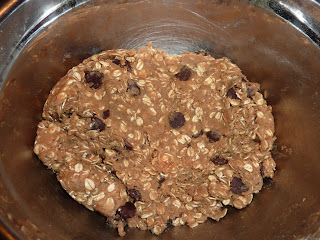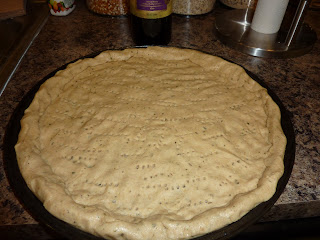Green Your Pet
I am an animal lover. I have a dog and cat at home, and the family just wouldn't be complete without them. We love our animals, but how can we lessen their impact on the environment? Here are some easy idea's for helping your furry friend be a bit...greener. :)
The first thing I have to say is spay or neuter your pet. Too many animals end up in shelters or euthanized because of lack of homes for them. On that same note, adopt a pet from a shelter next time you get one....consider it a recycle a pet program. :) You'll save a life and gain a loved one all in one gesture!
Poopy Bags -
It's a dirty job but someone has to do it. You love your dog, you walk him, you play with him....but everyone poops eventually, and what you do with that poopy can make a big difference. If you live in a townhouse, condo, or apartment and have to pick up every time, I highly suggest the
flushable bags. You pick it up, toss it in the potty, and flush. No lingering smell, no paper/plastic waste, just down the toilet with the rest of the family's poopy. The trouble with the flushable bags for walks and what not is that if its humid or rainy, or the poo isn't completely.......solid.....the bag may break down before you get home for the flushing. For these times I suggest a compostable, or
biodegradable bag. There's plenty out there. You can even get them at your local pet supply store now.

Kitty Litter-The most popular type of cat litter is clay. It is mined, shipped to a factory, ground into pellets, powder or flakes and then packed to be used as kitty litter; either clumping or standard. I want to go back to that last sentence. It is mined....strip mined to be exact. It's not a byproduct of something else, they strip mine the clay specifically for kitty litter. In fact, the US Geological Society estimates that about 85 percent of the nearly 2.6 million tons of clay used in the US per year is used for absorption of pet waste. This is something I didn't learn until just now. The waste must be scooped into baggies of some sort, and disposed of. The litter is not flushable, and once dumped ends up sitting in a landfill for eternity. If that wasn't enough, your typical clay cat litter also contains silicon particles, known to cause cancer in humans, so when you dump your kitty litter or scoop and your gagging on all that dust....there might be something even nastier getting into your system.
OK....I'm done putting down the clay cat litter...lets look at alternatives.
- You've got your
Silica cat litter. This one isn't clumping, but is very absorbent. You scoop the poo, but only change the litter once a month or so depending on the number of cats in the house.
- Plant based litters are probably your most sustainable.
World's best cat litter is made from corn.
Swheat is made from wheat, and
Feline Pine is made from...well...pine.
- Recycled material kitty litters are typically made from recycled paper or newspaper pressed into pellets such as
Yesterday's News.
My pets: Ozzy (the cat) and Jax (the dog)
Now we all know kitty is finicky, so choose a litter that your kitty will actually use. In addition, the silica, corn, and wheat litters are flushable, although there is some concern over toxoplasma being flushed with it. The plant based and newspaper litters claim to be biodegradable, but this is of course only if you plan to compost them yourself. They, unlike the clay litters, will eventually break down in a landfill.
Food -
The most important thing I can say about pet food is to try to get a high quality food made in America. The next step after that, if your pocket book can handle it, is to find organic foods, or try the raw diets if you want. Buying a food made in America makes a huge impact, and is safer for your pet. (remember the pet food recall a few
years back of several foods made in China?) You're food will be fresher, and won't have to be shipped as far. Check out
Canidae,
Evo,
Wellness, and
Orijen. A lot of people also like to feed their animals canned food. Keep in mind these cans, or plastic containers take a lot of energy to produce, are probably leaking BPA or other harmful chemicals into the food, and are probably not necessary for the health of your pet. They're actually bad for dental health. If your animal has a medical condition that requires wet food, check the container for recyclability.
Toys -

The first rule here for me is reduce, reduce, reduce. I can't tell you how many times I walk into someones house and see cat or dog toys all over, and I mean really, how often do they play with all those toys!? My dog has one ball. That's it. One. (He's a seek and destroy dog....nothing stuffed stands a chance, and his 80lb chompers can rip apart almost anything) My point here is, get a good quality toy that will last a long time. Our ball is 2 years old. There are lots of options out there now for toys made from recycled, and/or natural materials too.
Hemp cat toys, the
orbee dog toys, and
simply fido organic toys are all great options. You can even grow your own catnip (doesn't get much greener than that) and stuff it in the toe of some old pantyhose for hours of kitty fun.
Out pets make our houses into homes. They just need a little help lessening their carbon "paw"print along the way.
"Until one has loved an animal, a part of one's soul remains unawakened."
~ Anatole France
Jax and his best friend (my daughter)

































